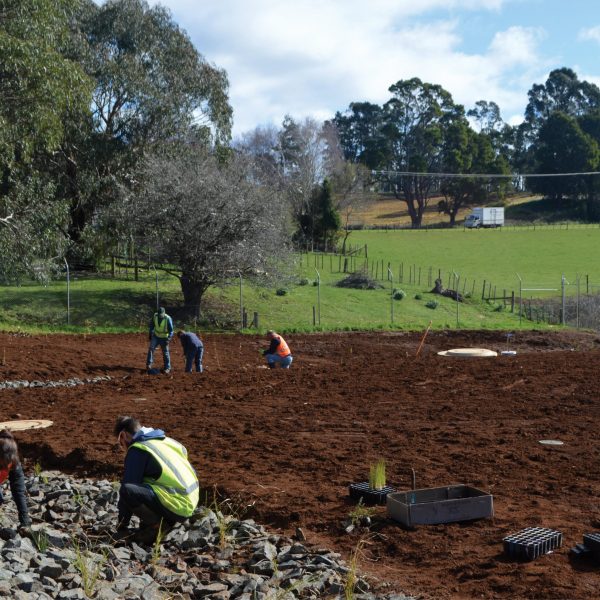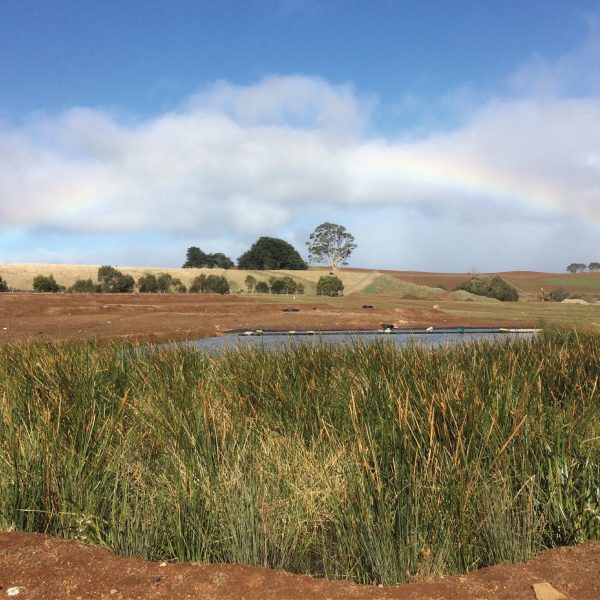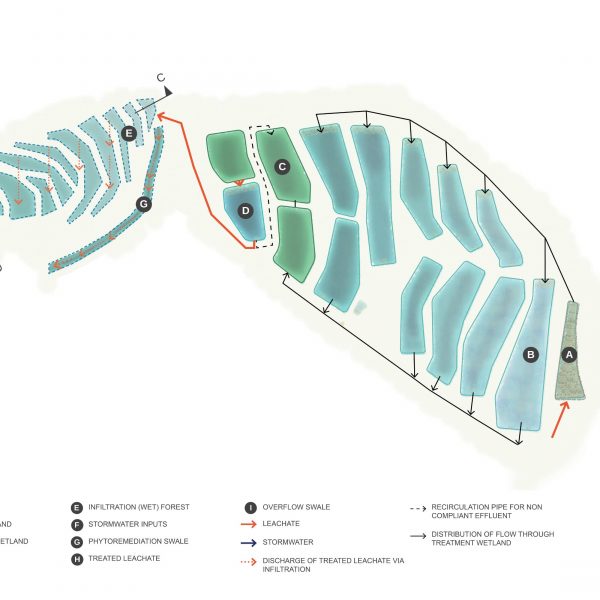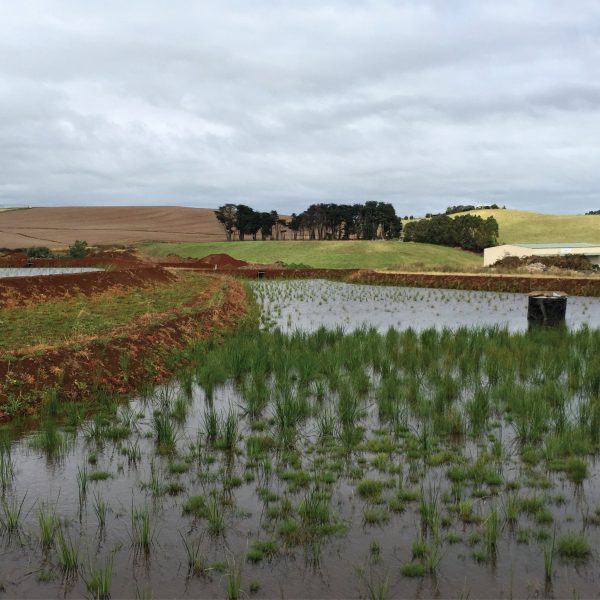This Burnie project is a treatment wetland system for landfill leachate
Location: Burnie, Tasmania
Client: Burnie City Council
Time frame: 2014 – Ongoing
Services provided by Syrinx
Constructed Wetlands/Biofilters; Ecological Engineering; Integrated Resource Management; Sustainable Remediation; Biodiversity Management; Ecological Restoration; Landscape Architecture; Specialist Construction
Project Phases Delivered
Project Phases Details
This Burnie project is a treatment wetland system for landfill leachate
The Burnie Waste Management Centre (BWMC) Leachate Treatment project is a flagship project delivered for Burnie City Council (BCC). It is a sustainable solution for managing landfill leachate and creating a positive environmental and community legacy within a decommissioned municipal landfill site. This project involved the design and construction of a novel treatment wetland system to manage the Stage 1 Landfill leachate as an alternative to discharging to the TasWater’s sewage network.
Constructed on top of a rehabilitated landfill cell, the wetland system treats an average of 490kL of landfill leachate per day. The treatment process removes low level contaminants via a treatment train comprising a precipitation pond to remove metals, aerobic and anaerobic ponds for biological removal of ammonium nitrogen and nitrate by endemic plants, a polishing pond and final discharge to Cooee Creek via infiltration within a constructed wet eucalypt forest.
Awards and achievements
- Australasian Land and Groundwater Association (ALGA), Sustainable Remediation Project Recognition Award, 2017, Winner
- Tasmanian Community Achievement Awards, EPA Sustainability Award, 2017, Finalist
- CCF Tasmanian Earth Awards, Category 2, 2017, Finalist
- Tasmania Engineering Excellence Awards (Innovation), 2018, Winner
Key outcomes
- The discharged water quality consistently meets the stringent targets required to enable creek discharge.
- Flows have been successfully disconnected from the sewer network, reinstating environmental flows, freeing up TasWater network capacity and reducing ratepayer costs.
- The wetland system, infiltration forest and waterway now have over 70 locally endemic species, which has increased biodiversity values and created new fauna habitats.
- The community has had positive involvement in the project; 200 volunteers comprising local community members, schools and community groups helped out in the planting of the wetlands.
- The project provides opportunities for research, interpretation and project links with the University of Tasmania and school science and environmental studies.



